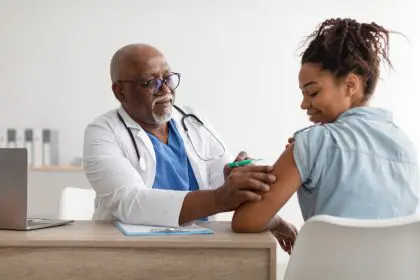Receiving an HIV-positive diagnosis can be overwhelming, but it’s important to remember that — with proper care and support — people living with HIV can lead healthy, fulfilling lives. This article provides a comprehensive guide on what steps to take after receiving an HIV-positive diagnosis.
Understanding your diagnosis
An HIV-positive diagnosis means that you have been infected with the human immunodeficiency virus (HIV). This virus attacks the body’s immune system, specifically the CD4 cells (T cells), which are crucial for fighting infections. Without treatment, HIV can lead to the development of AIDS (acquired immunodeficiency syndrome). However, modern medicine has made it possible for people with HIV to manage the virus effectively and prevent the progression to AIDS.
Immediate steps to take
1. Seek medical care
The first and most crucial step after an HIV-positive diagnosis is to seek medical care. Find a health care provider who is experienced in treating HIV. Early initiation of antiretroviral therapy (ART) is essential to control the virus, maintain your immune system and reduce the risk of transmitting the virus to others.
2. Understand your treatment options
Your health care provider will discuss various treatment options with you. ART involves taking a combination of HIV medicines daily. These medicines reduce the viral load in your body to undetectable levels, allowing your immune system to recover and function properly. Adherence to your treatment regimen is vital for its effectiveness.
3. Get a baseline evaluation
Your health care provider will conduct a series of tests to assess your overall health and determine the stage of your HIV infection. These tests may include:
- CD4 count: Measures the number of CD4 cells in your blood.
- Viral load test: Measures the amount of HIV in your blood.
- Drug resistance test: Determines if your strain of HIV is resistant to any HIV medicines.
- Other tests: Screen for other sexually transmitted infections (STIs), tuberculosis and hepatitis.
Building a support system
1. Informing your loved ones
Deciding who to inform about your diagnosis is a personal choice. A supportive family and friends network can provide emotional comfort and practical assistance. Choose people who are understanding and compassionate.
2. Joining support groups
Connecting with others who are living with HIV-positive can be incredibly beneficial. Support groups provide a space to share experiences, receive emotional support and gain valuable information. Your health care provider can recommend local or online support groups.
3. Accessing mental health services
Receiving an HIV-positive diagnosis can trigger a range of emotions, including fear, anger and sadness. Mental health professionals, such as therapists or counselors, can help you navigate these feelings and develop coping strategies.
Managing your health
1. Adhering to your treatment plan
Consistency in taking your ART medications is crucial. Set reminders, use pill organizers or find other methods that help you stay on track. Regularly attending medical appointments is also important to monitor your health and adjust your treatment if necessary.
2. Maintaining a healthy lifestyle
A healthy lifestyle can support your immune system and overall well-being. Consider the following:
- Nutrition: Eat a balanced diet rich in fruits, vegetables, whole grains and lean proteins.
- Exercise: Engage in regular physical activity to boost your immune system and improve your mood.
- Sleep: Ensure you get adequate rest each night.
- Avoiding risky behaviors: Reduce alcohol consumption, quit smoking and avoid recreational drug use.
3. Preventing transmission
If you are sexually active, practice safer sex to prevent transmitting HIV to your partners. Use condoms consistently and consider discussing pre-exposure prophylaxis (PrEP) with your partner, which can further reduce their risk of acquiring HIV. If you are a woman with HIV and considering pregnancy, consult your health care provider about options to prevent mother-to-child transmission.
Legal and financial considerations
1. Understanding your rights
Know your legal rights as a person living with HIV. Discrimination based on HIV status is illegal in many places. Organizations like the American Civil Liberties Union (ACLU) and local HIV advocacy groups can provide information and support.
2. Financial assistance programs
HIV treatment and care can be expensive. Explore financial assistance programs — such as the Ryan White HIV/AIDS Program, Medicaid or other local resources — which can help cover the cost of medications and medical care.
Staying informed
1. Educating yourself
Stay informed about HIV and advances in treatment by reading reliable sources such as the Centers for Disease Control and Prevention (CDC), the World Health Organization (WHO) and other reputable health organizations. Knowledge empowers you to make informed decisions about your health.
2. Advocating for yourself
Be your own advocate in health care settings. Ask questions, seek second opinions if necessary and make sure you understand your treatment plan. Your health care team is there to support you, but you have the right to be actively involved in your care.
Managing an HIV-positive diagnosis
An HIV-positive diagnosis is a significant life event, but it is not the end of the road. With early treatment, a strong support system and a commitment to your health, you can lead a long, healthy life. Remember, you are not alone: resources, health care professionals and communities are available to support you every step of the way. Take control of your health, stay informed and reach out for the support you need.
This story was created using AI technology.













